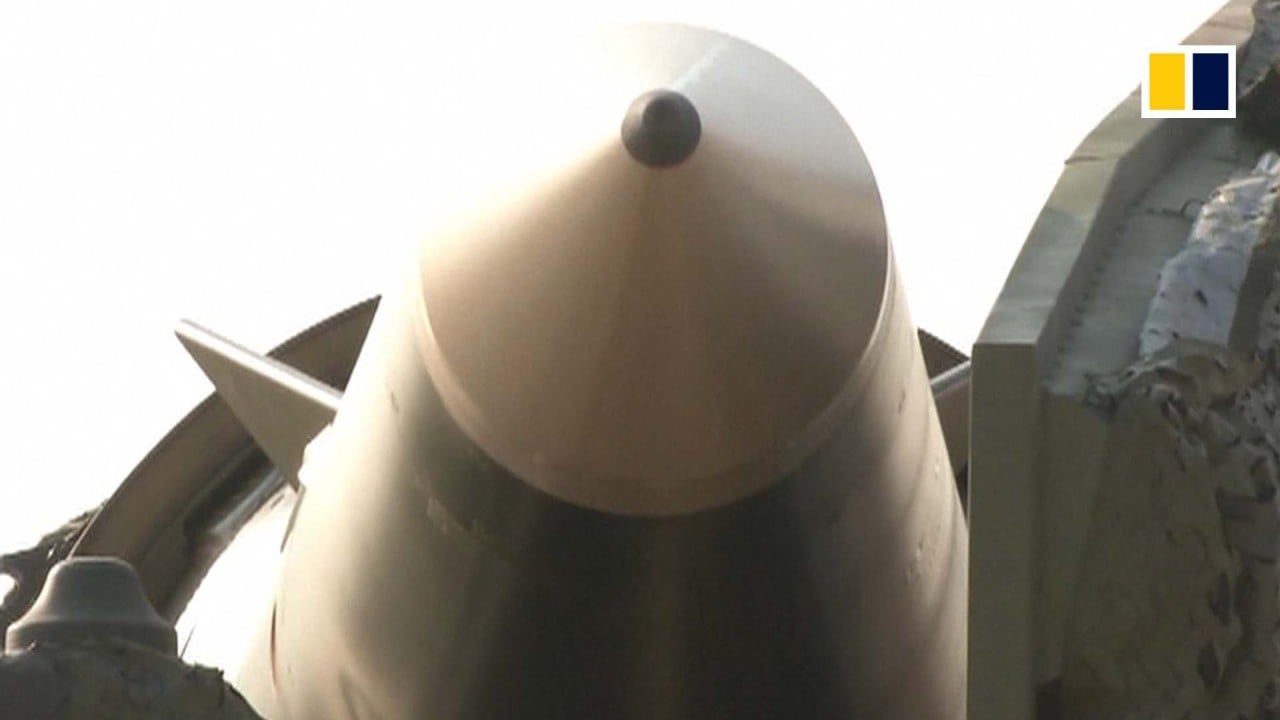
Are hypersonic missiles a game changer? Not so fast, says new study
- US researchers say computer modelling suggests the weapons do not have significant advantages over ICMBs in terms of speed or invisibility
- Russia, China and the US are all working on an array of hypersonic weapons
Hypersonic missiles are overrated in terms of speed and can be spotted by early warning systems, according to a report by US security experts that suggested their performance is roughly comparable to conventional ballistic missiles.
China, Russia and the United States have all been exploring the potential of the missiles, which travel at low altitudes along a lower and flatter trajectory than intercontinental ballistic missiles to reduce the time it takes to travel from launch to impact. They are able to change course once released from their rocket boosters.
But computational modelling suggested that while hypersonic missiles using boost-glide systems are faster over shorter distances, they would be slower than ICBMs over long distances because of atmospheric drag forces.

“Furthermore, hypersonic missiles will remain visible to existing space-based early warning systems for the majority of flight,” said the report published in Science & Global Security online on Saturday.
“Ultimately, these results show the performance and strategic implications of hypersonic weapons to be broadly comparable to those of established ballistic missile technologies.
“While hypersonic weapons exhibit some modest advantages in terms of, for example, manoeuvrability, fundamental physical limitations imposed by low-altitude atmospheric flight render these weapons at best an evolutionary – not revolutionary – advancement,” the report said.
China’s DF-17 hypersonic missile likely to have been part of recent drill
The report was written by Cameron Tracy, a security specialist from the Union of Concerned Scientists, a US-based non-profit organisation, and David Wright, an arms control expert from Massachusetts Institute of Technology.
“In short, hypersonic missiles are slower than ballistic missiles over intercontinental ranges. Claims that the advent of hypersonic weaponry will reduce the time necessary for warhead delivery between, for example, the United States, Russia, and China, are false,” the report said.

00:52
China’s DF-26 ballistic missile drill sends ‘clear message’ to the U.S.
Hypersonic glide vehicles, which can travel at five times the speed of sound, have been viewed as a game changer by some defence analysts. But while they can evade detection by radars, the report said they would still be visible to space-based infrared sensors during most of their flight.
“Hypersonic glide through the atmosphere produces immense heating of glide vehicles and the surrounding air, yielding strong [infrared] signatures that, when sufficiently intense, can be detected by space-based sensors,” the report said.
The United States, China, and Russia are racing to develop hypersonic weapons, and each plans to field a wide array of hypersonic systems in the coming decades.
China boosts attack range with launch of mystery cruise missile: insiders
Unlike Russia and China, the United States is not developing hypersonic glide vehicles for use with nuclear warheads.
The Pentagon’s 2021 budget request for hypersonic-related research was US$3.2 billion – up from US$2.6 billion last year – including US$206.8 million for hypersonic defence programmes.

